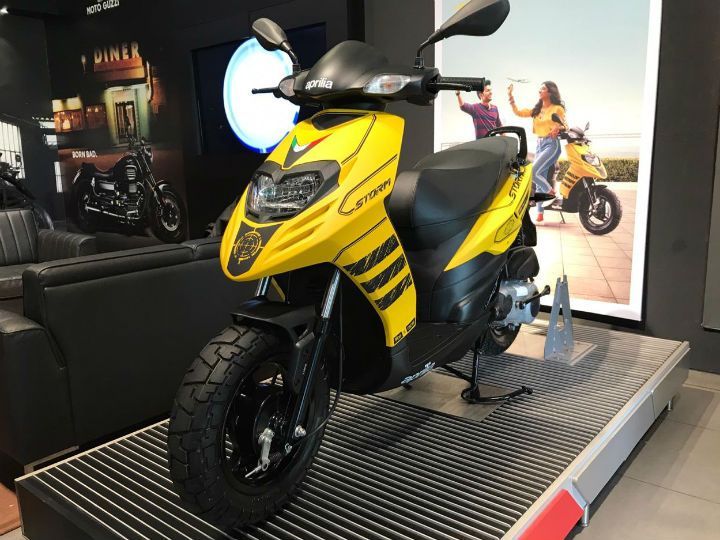
Priced at Rs 65,000 (ex-showroom Pune), the Storm 125 is Aprilia’s least expensive scooter in the country. If you’re planning to buy one, here are all the finer details that you need to know before you write that cheque:
Sleek Italian design:
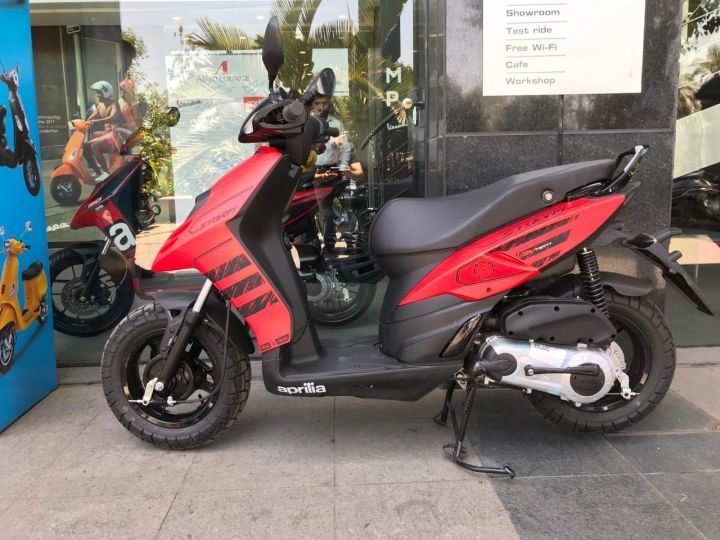
The Aprilia SR 125 and the Storm 125 share the same design scheme. That includes a sharp-looking apron with an apron-mounted headlamp, handlebar cowl-mounted indicators and slim side panels. Interestingly, the Storm 125 gets a single reflector and halogen bulb assembly instead of the SR 125’s twin-barrel unit. The headlamp is flanked by twin pilot lamps. Just like the SR 125, the Storm also features a twin pod analogue instrument cluster housing the fuel gauge, speedometer, odometer and tell-tale lights. Both scooters miss out on a trip meter.
However, in terms of paint, the Storm 125 gets a different finish compared to the SR 125. The Storm is offered in a matte paint scheme, either in yellow or red. This is further complemented by off-road-centric graphics, complete with a target reticle on the apron and side panels.
Smaller alloys, meatier tyres:
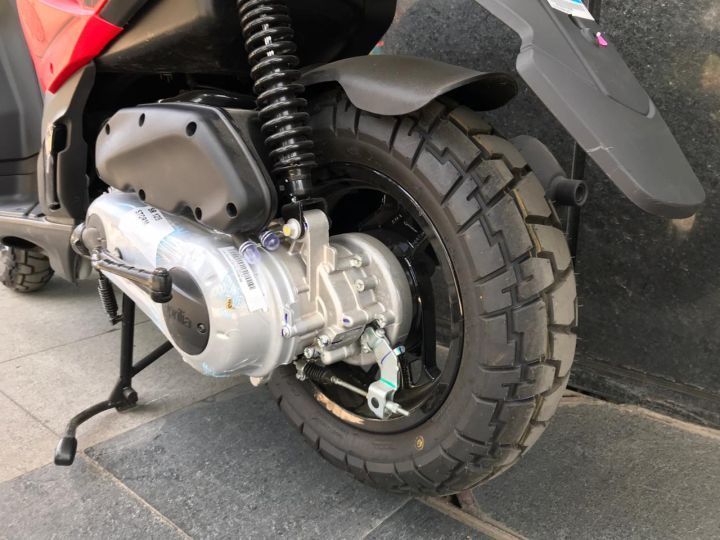
Instead of the 14-inch alloy wheels of the SR 125, the Storm rides on smaller 12-inch alloy wheels. These are wrapped with what look like dual-purpose tubeless tyres from Vee Rubber. They measure 120/80 up front and 130/80 at the rear. The overall diameter of the rim+tyre combo has remained unchanged, so what you essentially get are tyres with taller sidewalls. This should offer a better ride quality on our roads, at least theoretically.
Gets a more cost-effective braking system:
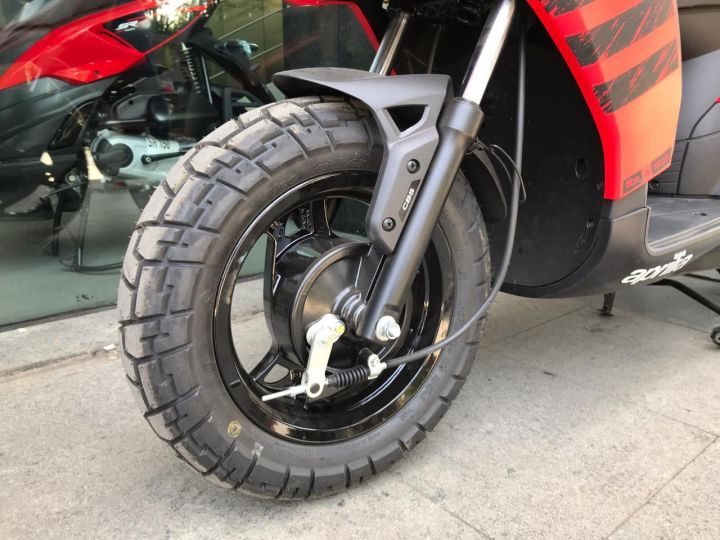
To keep prices competitive, Aprilia chose to use drum units at both ends in the Storm as opposed to the SR 125’s front disc and rear drum setup. That said, at 150mm, the front drum size of the Storm is one of the largest in its segment. At the rear, it retains the 140mm drum unit which the SR 125 also uses. Additionally, it comes with a combined braking system as standard to comply with the latest safety norms.
Shares the engine & suspension with its sportier sibling:
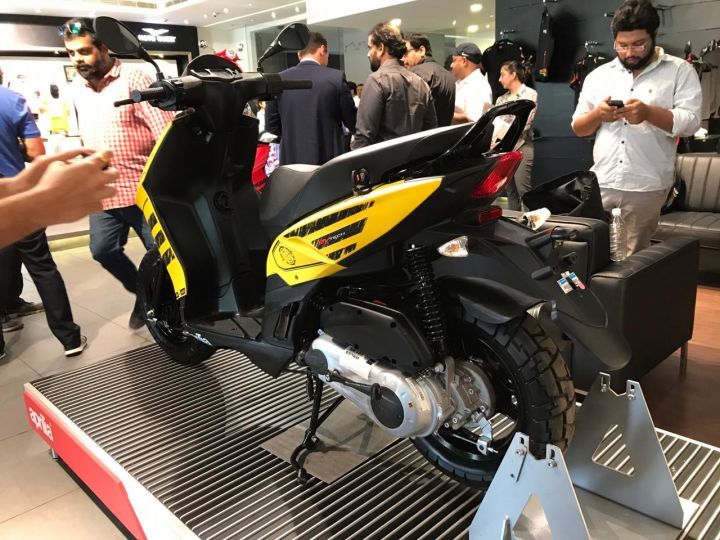
Both the Aprilia Storm 125 and SR 125 are powered by a 124.49cc single-cylinder 3-valve air-cooled engine. It is paired with a CVT unit and churns out 9.65PS at 7250rpm and 9.9Nm at 6250rpm. Even the suspension setup - telescopic front fork and rear single shock absorber - is the same in both scooters. So even though the Storm 125 is a more budget-oriented scooter, Aprilia hasn’t cut costs on the most important bit: the powerplant.
Value-for-money proposition but only by Aprilia’s standards:
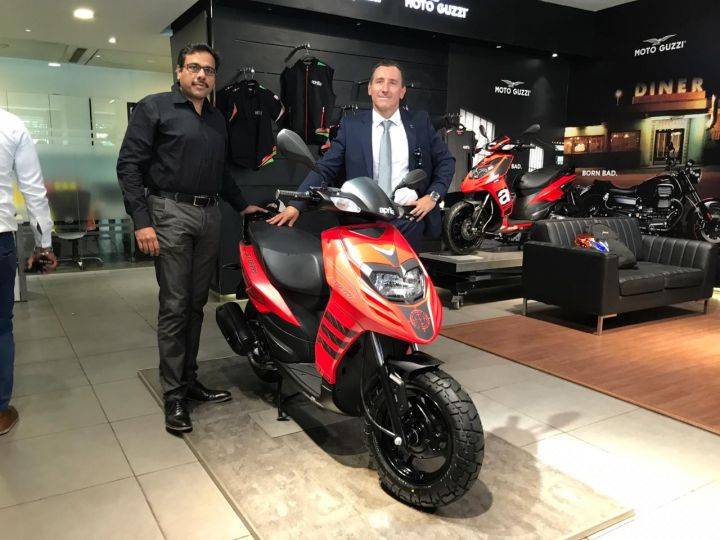
The Storm 125 is priced at Rs 65,000 (ex-showroom Pune). While it may be Aprilia’s most affordable scooter, its rivals come at relatively more affordable pricing. Case in point is the TVS NTorq 125 which costs about the same but gets a front disc and an advanced LCD instrument console with Bluetooth compatibility. Even the Hero Maestro Edge 125 (carburetted disc brake version) undercuts the Storm by Rs 2,700. All prices are ex-showroom Pune.
from ZigWheels http://bit.ly/2JO6FN0
Comments
Post a Comment